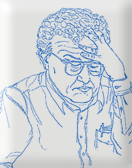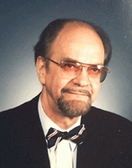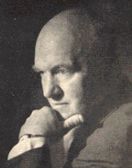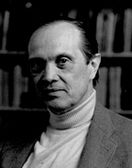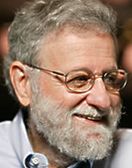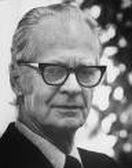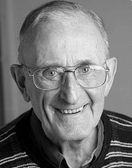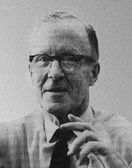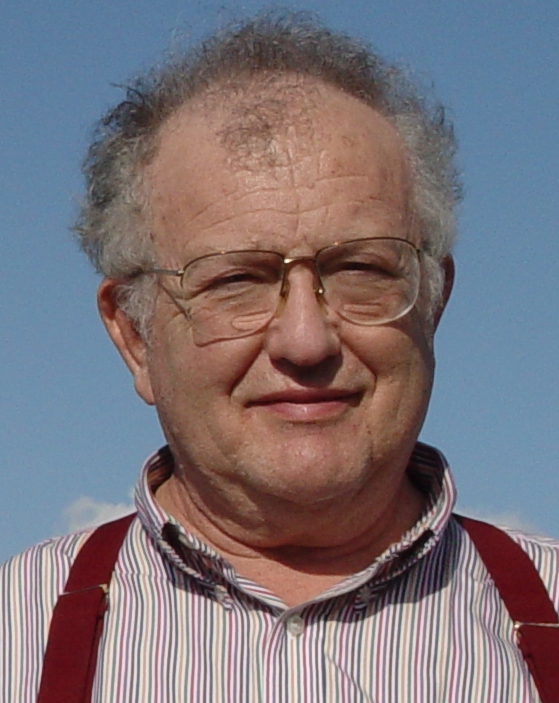
Introduction
I was born and raised in Toronto, and like most young Torontonians, I went to the University of Toronto, in my case to University College, at that time the only arts college of the U of T that was not affiliated with a Christian church. I found my courses fascinating, especially those in philosophy and psychology. Most of the students were from Toronto and commuted down to the university every day. Still we had animated conversations about the ideas presented in our courses. How could the hare ever beat the tortoise if, by the time he reached the position where the tortoise had last been, the tortoise would always have moved forward? I particularly remember the discussion as we walked up Philosopher's Walk from University College towards the buildings on Bloor Street where political science and economics were taught, or to the Royal Ontario Museum, where anthropology was given.
After earning a BA in "The General Course", in 1957, I decided to go into psychology - not certain that I didn't prefer philosophy, but telling myself that if I didn't like psychology, I could always switch fields. Not having done an honours degree in psychology, I was required to take a qualifying year of study in psychology. This was one of the best years of my life. I enjoyed my teachers and fellow students and felt I shared values and interests with them. So I stayed in psychology and never regretted it. I went on to take a Master's degree at Toronto in 1959. My thesis involved the application of learning theory to social psychology and was supervised by Robert Joyner and Val Cervin.
Subsequently I was admitted for doctoral studies at Yale, but in the summer before I went there, and the summer following my first year there, I had the good fortune of serving as the research assistant of Endel Tulving, then a young professor. From Endel I learned that it was possible to do research that was at the same time imaginative and rigorous.
I started at Yale in the fall of 1959. My best course there was the one in Learning Theory taught by Neal E. Miller. In addition to various theories of learning, I learned two important things from Miller. The first was that it was possible to test theories by experiments in which the complexity lay in the setting up of the experiment, not in the behaviour of the test subject (a rat in Miller's case). A simple outcome (e.g., that Group 1 does significantly better than Group 2) could be sufficient to support or undermine a theory. The second thing I learned was to pay attention to what the data were trying to tell you. If an uncontrolled factor was having a strong effect on the results, perhaps you should be studying that factor rather than the one you had intended to study in that experiment. Miller called it "making a silk purse out of the sow's ear." It was the application of this principle that, ten years later, led me into the study of the perceptual grouping of sounds.
I also had an excellent course in computer models of human behaviour from Earl B. Hunt. Two other professors at Yale who influenced me were Fred D. Sheffield and Robert P. Abelson, who taught inspiring statistics courses, Abelson contorting his arms in the air to illustrate the fourth dimension in a factor space.
I had gone to Yale to work with Carl I. Hovland on concept formation — at one point I gathered data for an experiment that he and Roger N. Shepard were carrying out — but Hovland died at the end of my second year at Yale. Still feeling the influence of my work with Endel Tulving, I chose to do my dissertation on human memory, though no faculty member at Yale was doing research in this area. Fred D. Sheffield generously offered to supervise it despite the fact that this was not his primary research area. He was unstinting with his time (usually in the middle of the night), and was rigorously critical, making me jump through a thousand hoops before he okayed my dissertation for submission. If I have since done the same with my own graduate students, they now know whom to blame.
Hovland had insisted that I take a course in computer programming. This turned out to be good advice, for in my final year at Yale, George Miller, the Harvard psychologist of language, came to give a colloquium and talked to me about becoming a postdoctoral research associate at the Harvard Center for Cognitive Studies. He wanted somebody who knew something about computers to help set up a minicomputer to carry out his experiments on the learning of an artificial language. He hired me to come there in the fall of 1962. The final write-up of my thesis overlapped with my first three months at Harvard, but this was never held against me.
At the Center for Cognitive studies, my office mate was Don Norman, a former engineer who had become a cognitive psychologist and a postdoctoral research associate like myself. I helped Don set up a shiny new lab computer, an 18-bit PDP-4 minicomputer (yes 18 bits, not 16!), about the size of a refrigerator (your refrigerator at home probably has more memory than this computer did). Oh yes; there was no operating system; so no file system. You had to remember at which memory address or at which block on a tape you had stored a particular number. While many researchers at the Center used it for research, I never did: I decided that my experiments would work better with small sheets of coloured plastic on a real (not virtual) desktop.
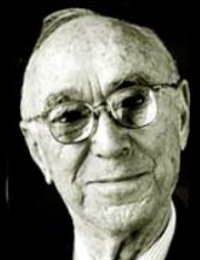 Jerome S. Bruner | 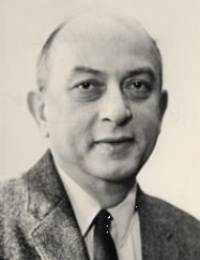 Solomon Asch | |
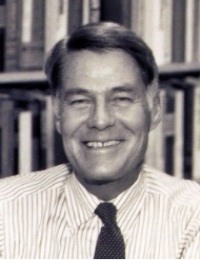 Roger W. Brown | 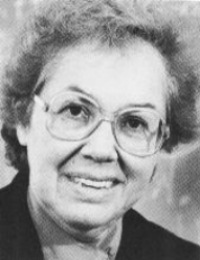 Janellen Huttenlocher, today |
The Center for Cognitive Studies had been founded by George Miller and Jerome Bruner. In the three years that I was there, from 1962 to 1965, it was seething with new research ideas. Miller and his students, among them Jacques Mehler and Harris Savin, were bringing Noam Chomsky's ideas about the abstractness of human grammar into the domain of experimental psychology. Bruner was working with his research associate Mary C. ("Molly") Potter and with sabbaticant David Olson on top-down processes in perception. Roger Brown, his student Ursula Bellugi, and others were working out the first grammars of the earliest utterances of children, showing that their utterances were already organized in systems and were not just associations. Donald Norman and Nancy Waugh were exploring new concepts of memory. I always enjoyed talking with Janellen Huttenlocher, David McNeill, and Paul Kolers, other research associates there. My time at the Center was spent soaking in all these ideas and doing my own research on memory. One memorable period was spent talking with Solomon Asch, a short-term visitor, about the history of the Gestalt movement, about subjectivity, and about computer modeling. Asch invited me up to come up and see him at Princeton's Institute for Advanced Study, my only visit to that hallowed place.
In addition to my research work I did some teaching as an Instructor (a very junior position) in the Psychology Department. At that time, hard-core experimental psychology had broken away from the rest of psychology and had its quarters in the basement of Memorial Hall. There, B. F. ("Fred") Skinner, S. Smith ("Smitty") Stevens, Edwin G. Boring, Richard J. Herrnstein, Edwin B. Newman, Joseph Stevens, and others carried out their studies. Short term members were Jacob Beck, and Eric Lenneberg. George Miller and Jerome Bruner were also members, but had their own separate research facilities at the Center for Cognitive Studies on Kirkland Street. It was rather intimidating for me, as a mere beginner, to sit around a small table with all these luminaries at department meetings, and on the whole I kept my mouth shut.
In my third year at Harvard I heard from my room-mate, Moshe Anisfeld, another postdoc, who had trained at McGill University, and visited there often, that they were looking for a cognitive psychologist. I applied, was invited up to McGill to give a talk, and was hired the same day. At that time, professorial jobs were easy to get because the bulge in the student population, caused by the post-war baby boom, was reaching the university level and there was a shortage of teachers. (Unfortunately, the rapid hiring at that time filled the teaching ranks to the limit, and after the baby boomers graduated, there was an oversupply of professors, making it hard for doctoral graduates to find jobs for many years afterwards.)
I started teaching at McGill in September, 1965, and have been there ever since, starting as an assistant professor and reaching the status of emeritus professor in 1999. I taught McGill's first course in cognitive psychology, presenting it as a sequence of the great ideas in the field, covering the work of various schools of psychological thought insofar as they bore on the human use of concepts, memory, language and problem solving. The ideas included those of Aristotle, the British associationists, the Würzburg school, D. O. Hebb, stimulus-response theory, Gestalt psychology, the computer as a metaphor for human information processing, Jean Piaget, and Noam Chomsky. I also taught a seminar for honours students for many years, trying to open them up to new ways of thinking about psychology. I was privileged to teach some fine students at McGill, some of whom, such as Renée Baillargeon, Paul Bloom, Alfonso Caramazza, Alison Gopnik, and Steven Pinker, went on to become outstanding scholars in the area of cognitive psychology. Others, such as Michael Mills and Bruce Walker, entered the field of human-computer interaction.
The McGill psychology department has been a good place to work. I have been able to benefit from conversations with Rhonda Amsel, Evan Balaban, Dalbir Bindra, Michael Corballis, Don Donderi, Donald Hebb, Daniel Levitin, Ronald Melzack, Peter Milner, David Ostry, Norman White, James Ramsay, Virginia Douglas and others. Furthermore the collegial atmosphere in McGill Psychology allowed me to carry on my work in my own way, without the distraction of professional rivalries, personal vendettas and interfering administration that is seen in many departments.
In about 1969, a few years after I had arrived at McGill, I happened to employ a rapid sequence of unrelated sounds in an experiment on auditory learning. It became apparent that the sequence that I perceived was not the actual sequence of sounds, and this fact would get in the way of the research I was planning to do. At that point I remembered Neal Miller's advice about making a silk purse out of a sow's ear, and instead of pursuing my original study, I began to study my odd observation of the incorrect perception of the sound sequence. This observation launched me into the study of auditory organization, a pursuit that has lasted since then. I was never trained as a researcher in auditory perception. This had an advantage. Unconstrained by the accepted research questions and methodology of auditory psychophysics, I could use my own perceptual experiences as a guide. This use of subjective experience sped up the process of discovery, and prevented me from getting caught up in methodological issues. Sometimes my students, whom I had encouraged to play with sounds and listen for certain effects, would come to me and complain, "Time is running out. When am I going to be able to get down to the real research?" My reply would be that their informal listening was the "real research" and that the formal experiment was only a means of proving their findings to other people.


